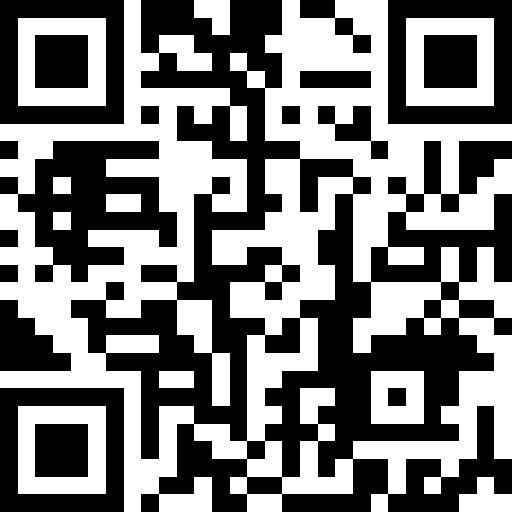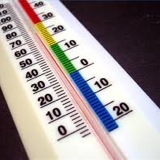Title Page
-
Conducted on:
-
Carried out and prepared by:
-
Site Location:
-
Scope of work:
-
Auditor Name:
-
DCC Department Responsible for Contract:
-
DCC Contract Manager (if different from the auditor):
-
Main Contractor in Control:
-
Site Supervisor / Site Manager:
-
Audit conducted with:
-
Contact Number:
-
Are there sub-contractors on-site?
Sub-contractor
-
Sub-contractor Business Name:
-
Weather Conditions:
A) RISK MANAGEMENT
-
A.1. Were you inducted into the site or provided with an escort?
-
A.2. A site specific safety plan (detailing the work to be undertaken and identifying associated hazards and controls) is in place for contractor and sub-contractors and is being updated as required?
-
What work they are doing, how they are going to do it safely, how is it documented and how is it communicated to all parties?
-
A.3. Evidence of H&S discussed at site meetings attended by all contracted workers and sub-contractors, including any traffic control workers?
-
A.4. Signage is at entrances to site (if appropriate), clearly identifying entry requirements, PPE requirements, restricted areas, significant hazards and evacuation instructions?
-
A.5. Emergency management plans are in place and are appropriate for the site?
-
A.6. Adequate systems in place for reporting hazards and investigation of incidents and communicated to all parties?
-
A.7 Are there any underground or overhead services that create a hazard? Have they been communicated and managed?
B) ENVIRONMENT
-
B.1. Is there potential for contamination of water, soil or air?
-
B.2. Does the contractor have a site specific Environment Management Plan (EMP) and is this on-site? If no, are the risks included in the site specific safety plan?
-
B.3. Are all expected environmental controls in place according to the EMP?
-
B.4. Does the contractor carry out regular environmental control inspections or audits?
-
B.5. Is there a suitable spill kit on site?
C) SITE VEHICLES, PLANT AND EQUIPMENT
-
C.1. SITE VEHICLES; warranted and evidence shows plant has been inspected? e.g. inspection stickers, pre-start forms completed and accurate?
-
C.2. MOVING PLANT/VEHICLES; controls in place when workers are working close to these, including reversing plant/vehicles, e.g. communication system, eye contact, spotters?
-
C.3. HAND AND POWER TOOLS; right tool for the job, tagged, good condition and guards in place? <br>
-
C.4. ELECTRICITY; power leads tagged/tested, no exposed wires, RCD's in place?
-
C.5. LADDERS; does the type/size of ladder look right for the job? feet treads and locking arms in good condition. Correct ratio 4:1 set up. Solid level ground, can the user maintain three points of contact at all times?
-
C.6. LIFTING CHAINS; tested and tagged and stored safely when not in use?
-
C.7. FIRST AID KIT/EQUIPMENT; available?
-
C.8. FIRE EXTINGUISHERS; tagged and tested?
-
C.9. COMPRESSED AIR; hose couplings secured, flying debris and exhaust controlled? Area isolated when in use?
-
C.10. SCAFFOLDING; does it have a current Scaff tag and is it inspected by a certified inspector weekly?
D) TRAFFIC MANAGEMENT SYSTEMS
-
D.1. Is a Traffic Management Plan (TMP) required? Consider whether the normal operating condition of the road has been affected, this includes diverting foot traffic.
-
D.2. Is there an approved TMP for the site? Evidence on-site?
-
D.3. Any alterations to the TMP have been documented? e.g. in the site specific safety plan or 2 hourly report
-
D.4. Traffic Controller's are trained and hold a current STMS or TC1? Evidence provided?
-
D.5. When moving through the site, from a road user / pedestrian point of view, does the site look and feel safe? E.g. effective pedestrian barriers / fences, signage visible and not confusing, speed etc
-
If the traffic management on site feels unsafe or dangerous, arrange for a qualified STMS to carry out a traffic management audit.
E) MANAGING HEALTH AND SAFETY ON SITE
-
E.1. Does the site show good housekeeping, clear of debris/rubbish?
-
E.2. Public safety has been considered? Alternative access routes are appropriate and well sign posted? Suitable controls in place for at risk groups e.g. children; mobility impaired; visually impaired?
-
E.3. Safety barriers are provided around all fall risks and are correctly installed and appropriate for the site?
F) HAZARDOUS SUBSTANCES
-
F.1. Are there any hazardous substances being used, produced or stored on-site?
-
F.2. Current Safety Data Sheet (SDS) for all hazardous substance on site?
-
F.3. Certified Handlers on site if required?
-
F.4 Are labels and any signage accurate and compliant?
-
F.5. Incompatible hazardous substances bunded separately? Flammable substances stored in approved flammable storage containers?
G) HAZARDOUS WORKS e.g. working at height, confined space, asbestos, electrical, hot work, excavation/trenching, gas)
-
G.1. Are there any current permits in place for the work being undertaken?
-
G.2. Are there any hazardous works being carried out?
-
G.3 HOT WORK; gas cutting/welding – controls in place to prevent welding flash/burns and fumes, correct PPE, secured upright cylinders fitted with flash back arrestors, combustible materials kept clear of work area? Permit in place?
-
G.4. WORKING AT HEIGHT; permit in place for all work over 2 metres, appropriate controls in place e.g. ladders secured, fall and edge protection in place, working platforms? Risk of falling >5m notified to WorkSafe NZ
-
G.5. EXCAVATION/TRENCHING; permit in place, sides supported and work area set up according to Approved Code of Practice (ACOP). Trenching over 1.5m notified to WorkSafe NZ?
-
G.6. CONFINED SPACE; permit in place, atmosphere tested and recorded frequently? Emergency stand-by (spotter) on site with no conflicting responsibilities? Effective emergency extraction plan is documented and understood by all?
-
G.7. ASBESTOS; site controller is aware of the work. Asbestos management plan is on site and is being followed e.g. PPE, area enclosure, warning signs, controls to prevent airborne contamination; air quality monitoring (where required)
-
G.8. ELECTRICAL; site controller is aware of the work? Circuits have been isolated and locked out, as well as tagged out, to prevent anyone making them live during the work? Technician can evidence use of any specialist non-conductive equipment e.g. fiberglass ladders?
-
G.9. GAS; where necessary, safety zones have been physically marked out? Ignition sources have been controlled? Combustible materials removed? Leak detection methods can be explained / demonstrated?
H) WEATHER CONDITIONS
-
H.1. Risks identified and control measures in place for low light (rainy days/night work)?
-
H.2. Sun and heat e.g. sunscreen provided?
-
H.3. Inclement weather? e.g. wet weather gear etc.
I) WORKERS
-
I.1. Workers are wearing all appropriate PPE as required for the site? PPE is in good condition and suitable for the task?
-
I.2. Workers are aware of the Emergency Management Plans, have knowledge of the alarm process, assembly areas and location of emergency equipment e.g. first aid kit, fire extinguisher, spill kit?
-
I.3. Workers can evidence qualifications ? e.g. confined space, height, electrical etc.
-
I.4. Site welfare facilities for workers are adequate? Clean toilets, hand washing facilities, drinking water for maintaining hydration etc.?
-
I.5. Manual handling tasks are identified and controls are in place to eliminate or reduce risk or physical injury or fatigue?
OUTCOMES - COMPLIANCE ACTIONS
-
Summarise any non-compliances sighted: (e.g. failure to meet established procedures/regulatory requirement or any action/omission with potential to create a high-risk incident)
-
Note: Serious non-compliances sighted must be dealt with immediately by the main contractor. If serious safety concerns are observed, work should cease immediately & the DCC H&S team and respective DCC Project Manager must be informed immediately
-
Note required Improvements or recommendations for improvement: (e.g. where failures to demonstrate effective record keeping or communication are noted)
-
Actions taken to address any Non-compliances or Required Improvements:
Action
-
Action
-
Date completed:
-
Re-inspection required?
-
Send to:
* DCC Project Manager
* Contracting Company Head Office & Site Manager
* Load audit .pdf into VAULT / PEOPLE / Contracted Workers / Periodic Review > Add.
* Load any NTC's for non-compliance under VAULT / PEOPLE / Contracted Workers / Non-compliance > Add
Notes:
Please identify the contracting/subcontracting company involved if non-compliances have been highlighted
Any serious non-compliance highlighted must be dealt with immediately by the main contractor
If serious safety concerns are observed, work should cease immediately and the DCC Health and Safety Team and the respective DCC Project Manager must be informed immediately














